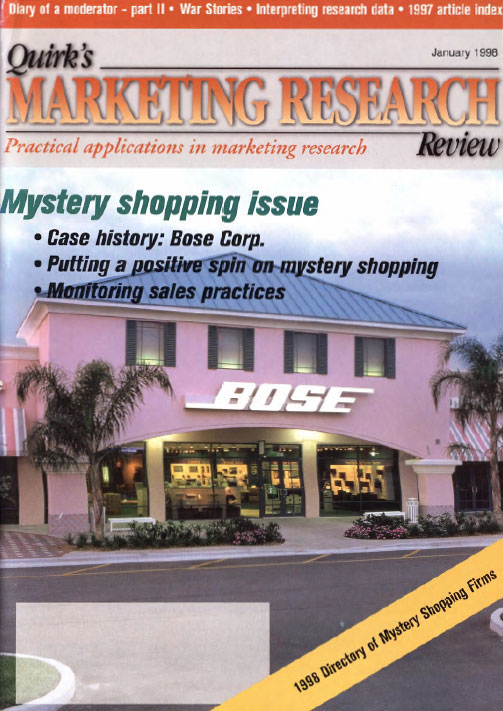Bad service? It’s kind of a mystery.
 For many years, January was our month to focus on mystery shopping in the magazine. We devoted the entire issue to it, adding a directory of mystery shopping providers to our usual lineup of case studies and technique articles. With this being the January/February 2024 issue, it seemed like a good time to look back at some snapshots from our mystery shopping coverage over the years.
For many years, January was our month to focus on mystery shopping in the magazine. We devoted the entire issue to it, adding a directory of mystery shopping providers to our usual lineup of case studies and technique articles. With this being the January/February 2024 issue, it seemed like a good time to look back at some snapshots from our mystery shopping coverage over the years.
The basic idea of mystery shopping – sending ordinary consumers trained in the process of completing a transaction or interaction in a retail or other type of location to have them capture their experience with store processes and personnel – hasn’t changed. The same can’t be said about the technology by which to do so.
Stephanie Smith’s January 1998 article, “High-tech mystery shopping: Using audio and video shopping effectively,” outlined in almost spy-novel-like detail how the microphones and video cameras can be concealed during visits to record sales employees’ success at incorporating their training into their interactions with prospective customers.
“Although there are some favorite areas to conceal the device, there is no standard. Some companies use a small microphone that runs from the concealed recorder to a hidden area on the shopper or on some type of common accessory such as a pen, purse, belt or pager.
”Just as audio shopping uses micro-recorders, video shopping requires micro-cameras, transmitting equipment and concealed video recorders. The technology involved in video shopping is far more advanced and expensive than audio shopping. Therefore, it is necessary to use highly trained professional shoppers who can operate the equipment properly. This also eliminates issues of liability.”
Fast-forward to Ron Welty’s January 2005 article, “21st century mystery shopping.” Though it was published during the period when cameras were starting to be common in cellphones, the section on the value and use of “digital photos” focuses on the mystery shopper bringing a digital camera into the store. “Evaluations are usually not announced to the location until the evaluator arrives, at which point they introduce themselves to the store manager and inform them that they are there at their company’s request to conduct a site evaluation that will include digital photos. Following a pre-established checklist of what to audit, including descriptions of specifically scripted shots that the evaluators are provided before their visit, they then conduct the audit and take several digital photos.”
Welty also explored the value of digitally recorded phone calls that capture call-center or store employee interactions with customers and drew a contrast between digital recordings and the cassette-based analog recordings that some firms were offering.
“Receiving a digitally recorded call of the conversation, accompanied by a detailed evaluation report, helps clients understand what is happening in their business faster and lets them make better decisions on how to run their business to acquire and keep more customers. Another aspect many clients find helpful is having their calls burned to CDs, by management level (division, region, etc.), for use in training sessions, reviews, etc.”
Given all the slow and deliberate steps companies have historically taken to mystery-shop and the almost instantaneous nature of the audio, video and photographic feedback they can now obtain from the devices carried by every current mystery shopper, it’s disheartening that customer service remains so poor in so many realms. Increasing the speed of insights has clearly not resulted in improved employee training, processes or oversight.
